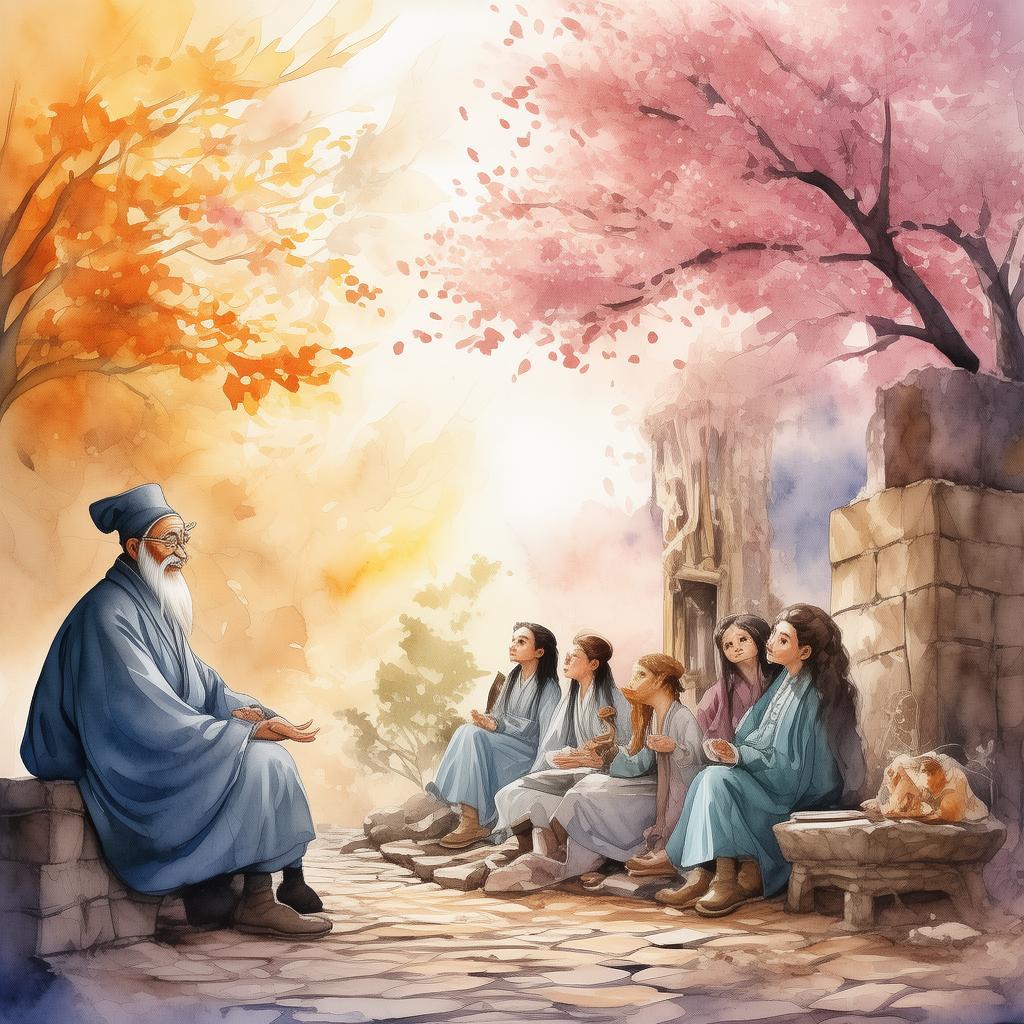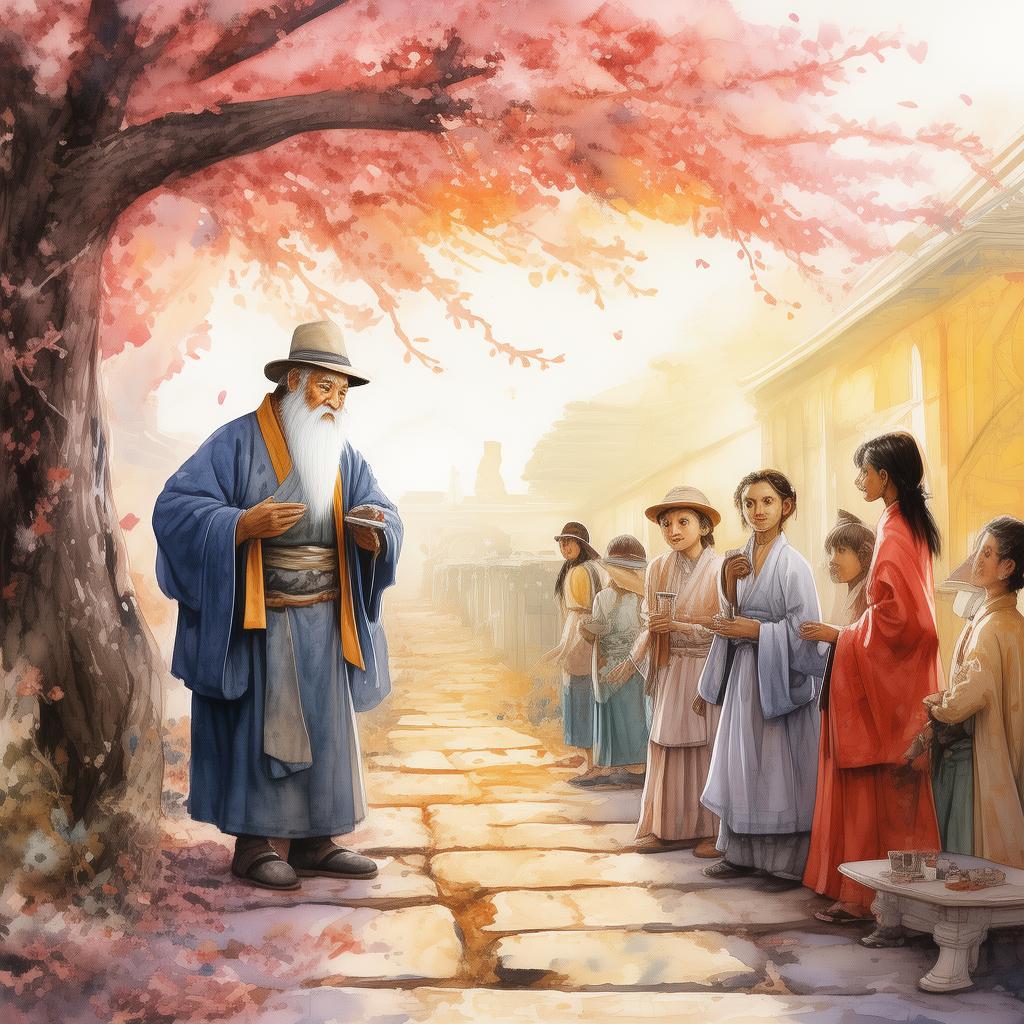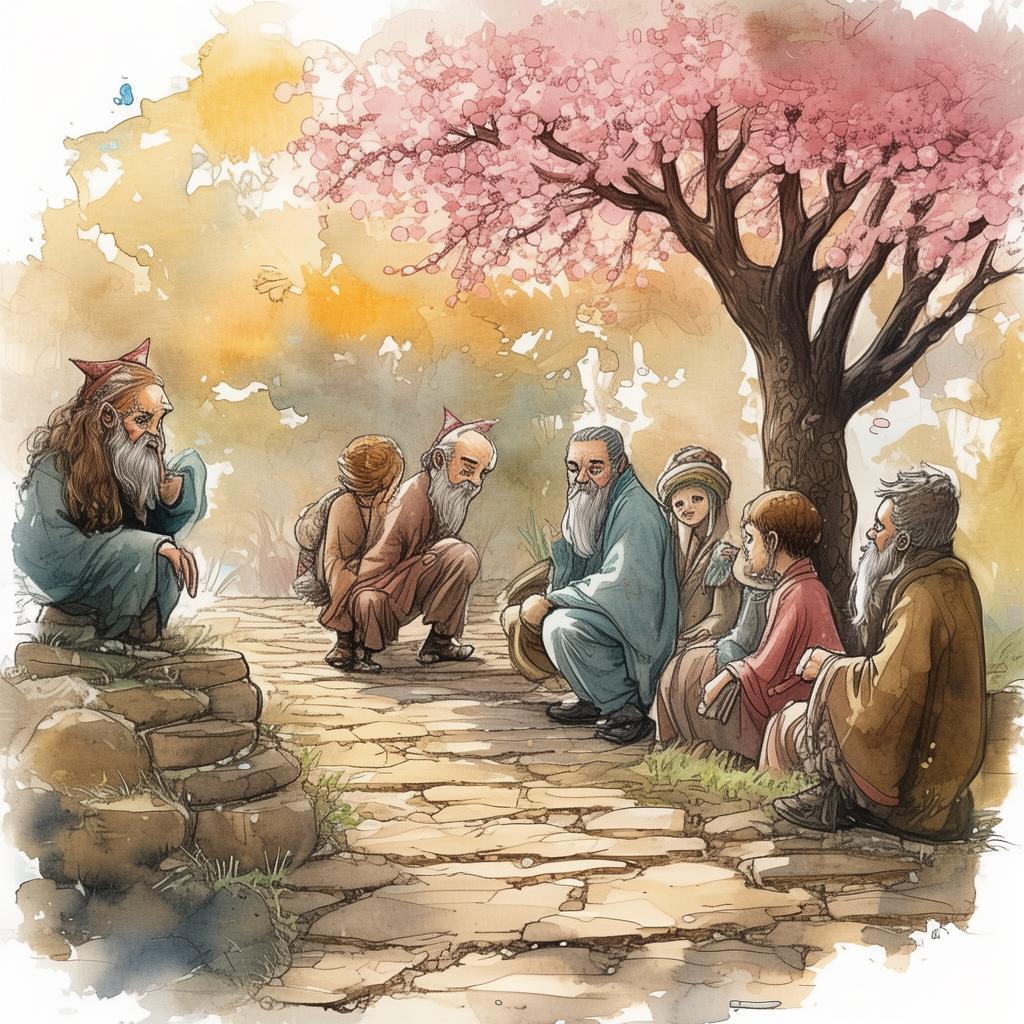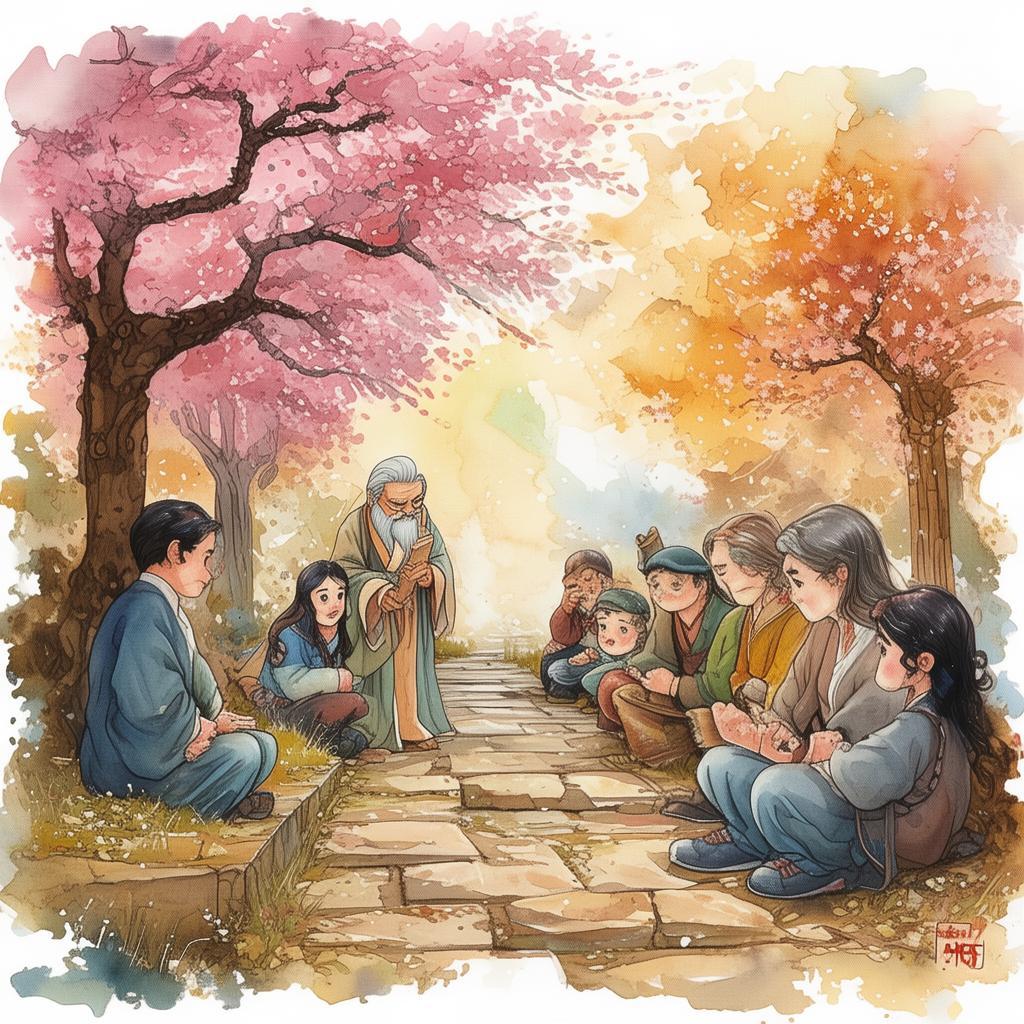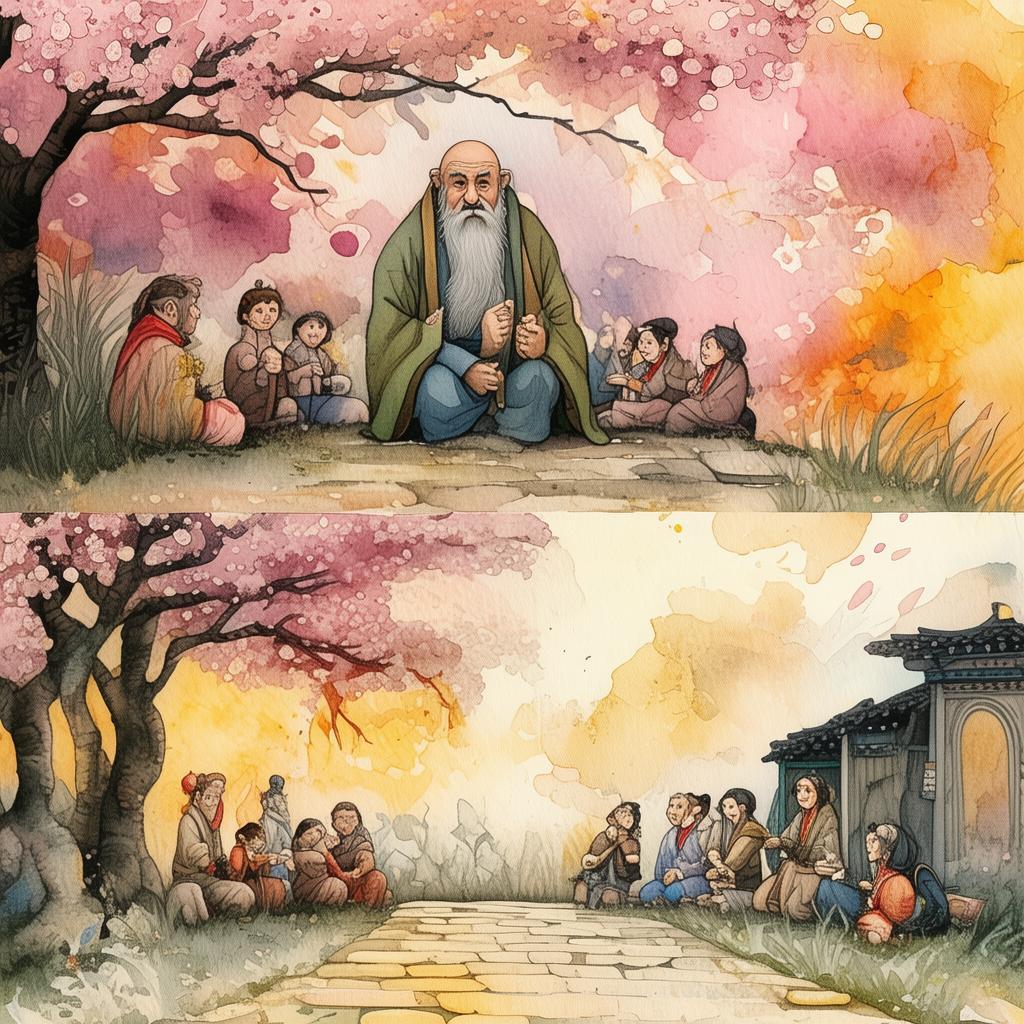Trigonometric Tides: The Pythagorean Plague
In the bustling city of Eudoxia, where the scent of ancient wisdom mingled with the modern clamor, there was a legend whispered among the scholars: the Pythagorean Plague. It was said that anyone who sought to understand the Pythagorean theorem would be cursed, their lives torn apart by a mathematical enigma that no one could solve.
Three friends, named Ionia, Archimedes, and Euclid, were fascinated by this legend. They were students at the prestigious Academy of Eudoxia, where the pursuit of knowledge was a sacred duty. Despite the ominous tale, they decided to challenge fate and delve into the depths of the Pythagorean theorem.
Ionia, the most inquisitive of the trio, was a master of geometry. Her eyes sparkled with curiosity as she studied the theorem's ancient origins. Archimedes, a prodigy in calculus, was intrigued by the theorem's potential applications. Euclid, the philosopher of the group, sought to uncover the deeper meaning behind the theorem's mystical allure.

One evening, as the moon cast its silver glow over the city, they gathered in the grand library of the Academy. The air was thick with anticipation as they opened the ancient tome that contained the Pythagorean theorem. The theorem itself was simple, yet it seemed to hold a secret that could change their lives forever.
The theorem read: "In a right-angled triangle, the square of the length of the hypotenuse is equal to the sum of the squares of the lengths of the other two sides."
As they pondered the theorem, a strange phenomenon occurred. The pages of the book began to glow, and a series of equations appeared, each more complex than the last. The friends were mesmerized, their minds racing to decipher the cryptic messages.
Days turned into weeks as they worked tirelessly to unravel the equations. The library became their sanctuary, a place where they could escape the world and focus on their quest. But as they delved deeper, they began to notice strange occurrences. Ionia would find herself unable to solve even the simplest geometric problems. Archimedes would struggle with calculus, and Euclid's philosophical musings became increasingly abstract.
The friends grew concerned, but they were determined to press on. They believed that the answers they sought were not just mathematical but also personal. They were on the brink of a discovery that could change their lives forever.
One night, as they sat together, a sudden realization struck them. The equations were not just a series of numbers and symbols; they were a map, leading them to a hidden truth about the theorem itself. The key was the hypotenuse, the longest side of a right-angled triangle, which represented the connection between the friends.
As they followed the map, they discovered a hidden chamber beneath the library. Inside, they found an ancient artifact, a small, ornate box. They opened it to reveal a single, glowing stone. The stone was unlike anything they had ever seen, pulsating with a strange, otherworldly light.
Suddenly, the chamber began to tremble, and the ground shook beneath their feet. The friends were thrown to the floor, their lives hanging in the balance. As the dust settled, they realized that the stone was the source of the Pythagorean Plague. It had been placed there by ancient scholars to protect the theorem's secrets, but now it had unleashed its curse upon them.
The friends understood that they had to find a way to break the curse. They knew that the only way to do so was to solve the equations they had been working on. As they worked together, they realized that the key to breaking the curse was to embrace the connection between them, just as the hypotenuse connected the sides of a right-angled triangle.
Through their combined efforts, they solved the equations and released the stone from its prison. The chamber calmed, and the curse lifted. The friends stood up, their lives forever changed. They had not only unraveled the mystery of the Pythagorean theorem but also discovered the true power of friendship.
As they left the chamber, they realized that the legend of the Pythagorean Plague was not a warning but a test. It had challenged them to explore the depths of their minds and their hearts. In the end, they had not only overcome the curse but also found a deeper understanding of themselves and each other.
The Pythagorean Plague had been a tragic tale, but it had also brought the friends closer together. They had faced the unknown, overcome adversity, and emerged stronger. The story of the Pythagorean Plague was now a testament to the power of friendship, knowledge, and the indomitable human spirit.
✨ Original Statement ✨
All articles published on this website (including but not limited to text, images, videos, and other content) are original or authorized for reposting and are protected by relevant laws. Without the explicit written permission of this website, no individual or organization may copy, modify, repost, or use the content for commercial purposes.
If you need to quote or cooperate, please contact this site for authorization. We reserve the right to pursue legal responsibility for any unauthorized use.
Hereby declared.



